City is a community where thousands—or even millions—of people live and work. Cities are the world’s most crowded places. New York City, for example, had an average of about 29,300 people per square mile (11,300 per square kilometer) during the 2020 census. At that time, the United States as a whole averaged only about 92 people per square mile (35 per square kilometer). Kolkata, India, had an average of about 112,000 people per square mile (43,000 per square kilometer) in 2010. India as a whole averaged about 1,063 people per square mile (410 per square kilometer). Other large cities also have population densities that are hundreds or thousands of times as large as their average national population densities.
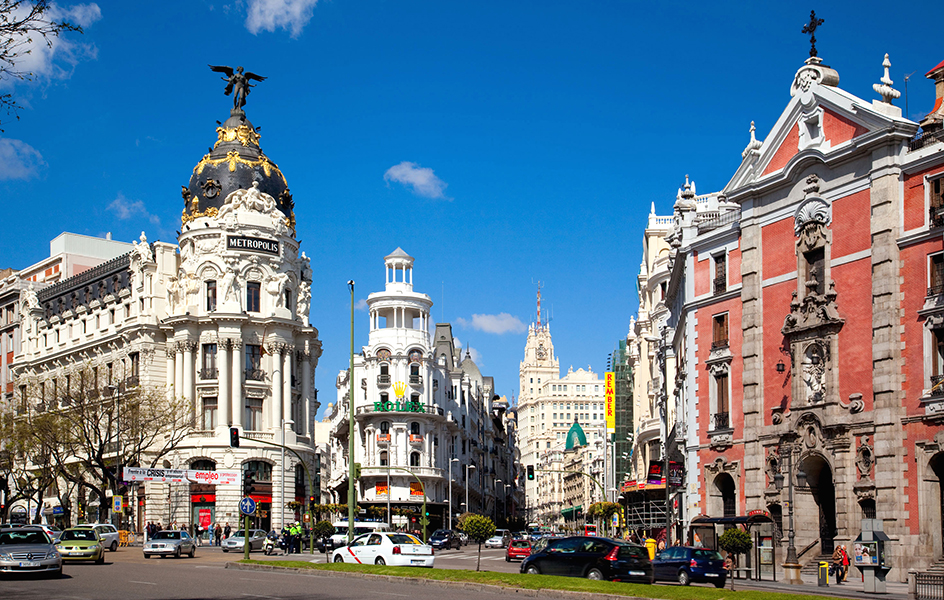
The percentage of the world’s people living in urban places (cities and their surrounding areas) keeps growing. In 1800, probably about 2 to 3 percent of the world population lived in urban places. This figure was about 55 percent in 2020. In 1800 only about 5 percent of the U.S. population was urban. This figure reached about 83 percent by 2020.
Cities offer many activities for residents and visitors. Art museums display works by famous artists, and musicians perform in classical recitals or rock concerts. Auditoriums and playhouses present many forms of live entertainment, from circuses to plays. Movies from around the world play at local theaters. Restaurants offer food from diverse cultures, and department stores sell a wide range of items. Huge stadiums enable thousands of people to attend sporting events.
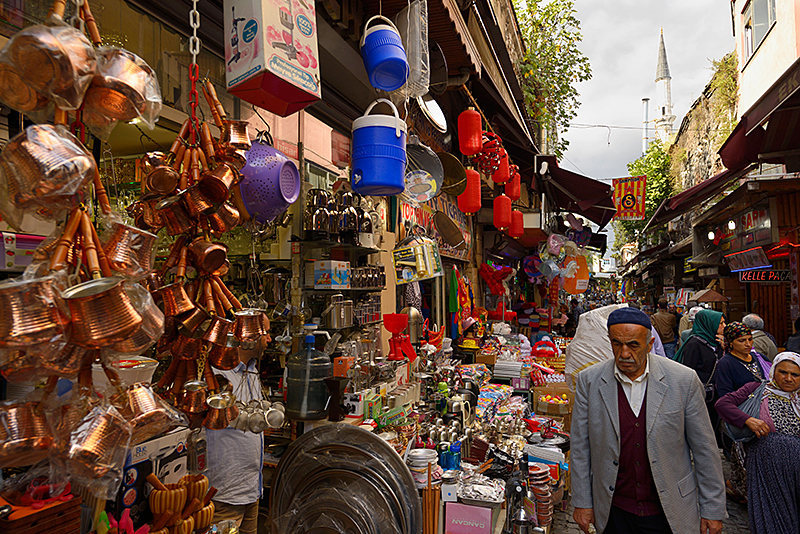
Nevertheless, many cities are overcrowded, dirty, and noisy. Traffic jams delay people who are trying to travel to work, stores, or other places. Automobiles and electric power plants dirty the air with fumes that endanger people’s health. Motor vehicles, factories, sirens, and construction equipment create bothersome noise. Many cities have a high crime rate, and violence sometimes breaks out between racial, ethnic, or religious groups.
People choose to live in or near cities for several reasons. Many people enjoy the rapid pace, bustling activity, and cultural opportunities of city life. However, traditionally, the main reason people chose cities was the number and variety of jobs available, particularly because cities served as trade and manufacturing centers. Over the past 50 years, vast technological improvements have dramatically lessened the need for manual laborers, especially in the cities of developed countries. Manufacturers moved out of many cities and into communities just outside the city called suburbs, where land was cheaper and more plentiful. In many cases, they even moved out of developed countries to less developed ones, to take advantage of a less expensive labor force. Many city jobs today involve services, including such advanced, knowledge-based jobs as computer programming and medical technology, as well as jobs in design and the arts and in basic services such as food service and hospitality. Service industries have become a key economic driver of advanced societies, especially in cities. Far fewer jobs are available for unskilled workers in cities in less developed countries in Africa, Asia, and Latin America. Nevertheless, cities still attract people willing to work at any job.
No rule states the number of people a community must have to be classified as a city. Some communities are called cities for reasons that have nothing to do with their population. In the United States, for example, one definition of city is any community—regardless of population—that has some form of city government. But most people use the word for large urban communities. This article uses the word city in that sense.
Population standards, however, help distinguish urban places and rural places. In general, all communities in the United States with 2,500 or more people, and smaller communities near big ones, are considered urban. Farms, and communities in uncrowded areas with fewer than 2,500 people, are considered rural. The population standard varies among other nations of the world, and ranges from about 2,000 to 10,000 people for urban places.
This article explains how cities began and developed. It describes cities and city life throughout history. It also discusses urban problems, cultural groups in cities, and cities of the future.
How cities began and developed
Human beings have probably lived on Earth about 2 million years. But they began to live in permanent settlements only about 13,000 to 10,000 years ago. Before this time, people wandered from place to place, hunting animals and gathering plants for food. Eventually, people noticed seasonal supplies of fish and plants in certain regions. They remained near the available food for years at a time. About 11,000 years ago, according to most scientists, people in the Middle East began to cultivate the land. These men and women, called Neolithic people, became the first farmers. 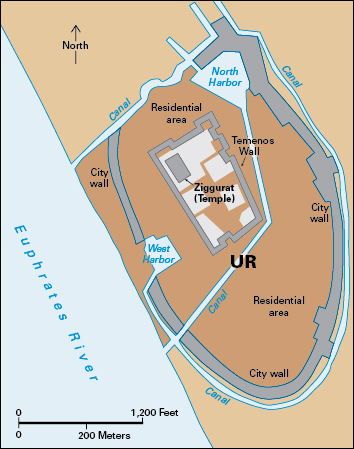
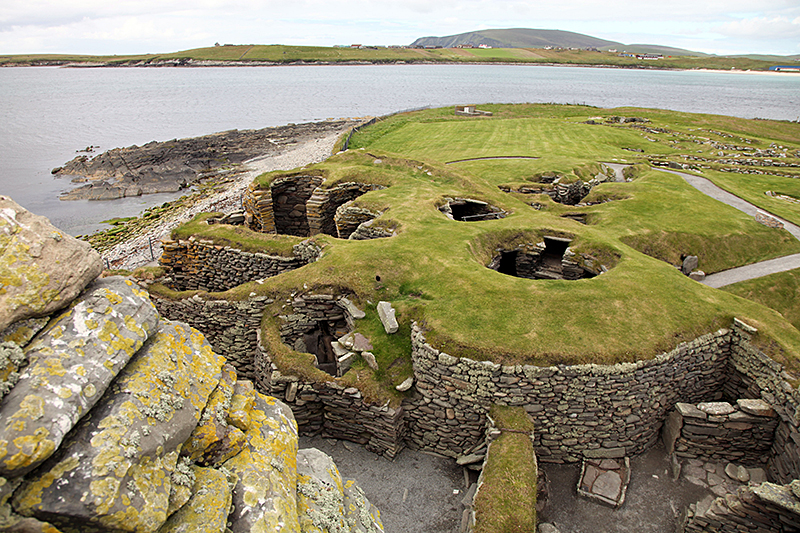
From about 8000 to 3500 B.C., some Neolithic villages developed into small cities of a few thousand people. Since these first cities appeared, people have built cities for many reasons. The cities have differed in size and layout, and they have had a variety of economic, governmental, and social systems. But all permanent settlements—from Neolithic village to giant city—needed four main features to begin and to grow. These features were (1) advances in technology, (2) a favorable physical environment, (3) social organization, and (4) population growth.
Advances in technology.
The word technology refers to the tools, knowledge, and inventions that help people satisfy their needs and improve their way of life. Technological advances that helped cities develop include farming skills and improved transportation.
Neolithic people learned how to grow crops and invented tools that improved farming methods. Neolithic people also tamed animals, which they used for food or agricultural tasks. All these developments helped many Neolithic families produce more food than they needed.
Because of this surplus food, a number of people switched to jobs other than farming. Some became skilled at crafts and made baskets, cloth, leather goods, tools, or other products. Others became miners and dug for flint, metal, and stone. The nonfarmers traded the items they made to the farmers in exchange for food.
Through the years, people in distant cities began to trade with one another. In addition, technological advances enabled more people to become nonfarmers. They worked as warriors, record keepers, and religious and political leaders. These people founded and populated the cities of the world.
Technological advances have influenced city life throughout history. For example, the development of the steam engine in the 1700’s gave people the power source they needed for large-scale manufacturing. Many cities, including Barcelona, Spain, and Birmingham, England, became major manufacturing centers partly because of this development. Sometimes industrial expansion led to the construction of new cities. In the early 1900’s, the United States Steel Corporation planned and built Gary, Indiana, around the company’s new mills. During the 1900’s in Australia, Canada, the United States, and many countries of Europe, thousands of suburbs grew up around big cities. The automobile and the railroad train—two technological advances in transportation—helped make these suburbs possible. Many people who lived in the suburbs needed cars, buses, and trains to travel to work in the cities. In the early 2000’s, similar “suburbanization” was rapidly taking place in India. 
Physical environment
of a city includes its location, its climate, and the availability of water and food. Cities have been founded in many kinds of environments, but their development has depended on certain favorable environmental features. All cities, for instance, must have enough drinking water. Early communities, which depended on farming, needed enough rainfall to grow crops. Good soil was also essential for growing crops, and nearness to other food—animals and edible plants—was helpful. Other favorable environmental features included a reasonably mild climate and a location near materials for making clothes and building shelters.
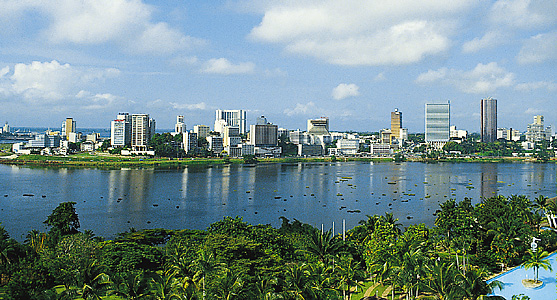
Early people found many favorable environmental features in river valleys with hot weather. Some chose to settle in the Tigris–Euphrates Valley of what is now Iraq and the Nile Valley of what is now Egypt. Other early people settled in the Huang He (Yellow River) Valley of present-day China and the Indus Valley of what are now northwestern India and Pakistan. 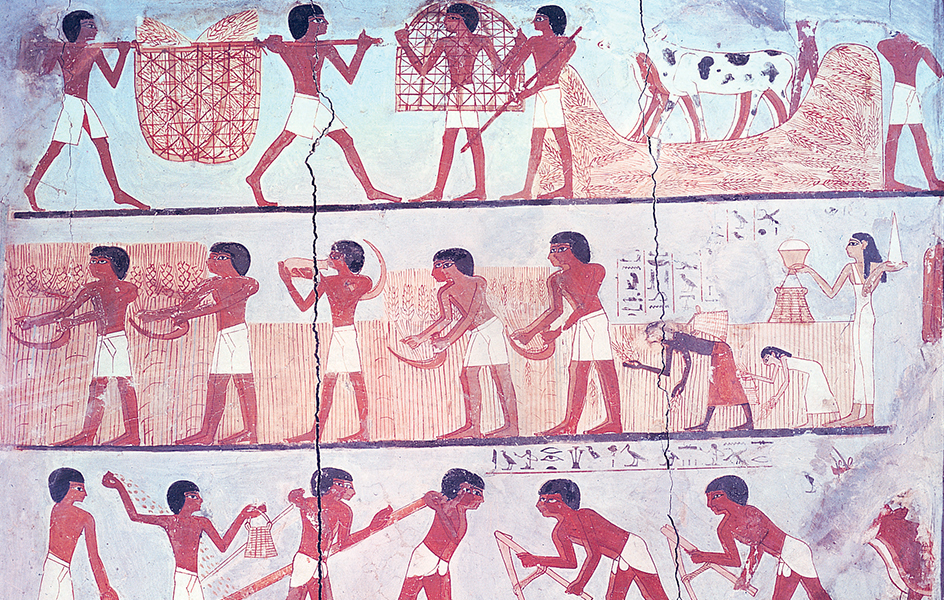
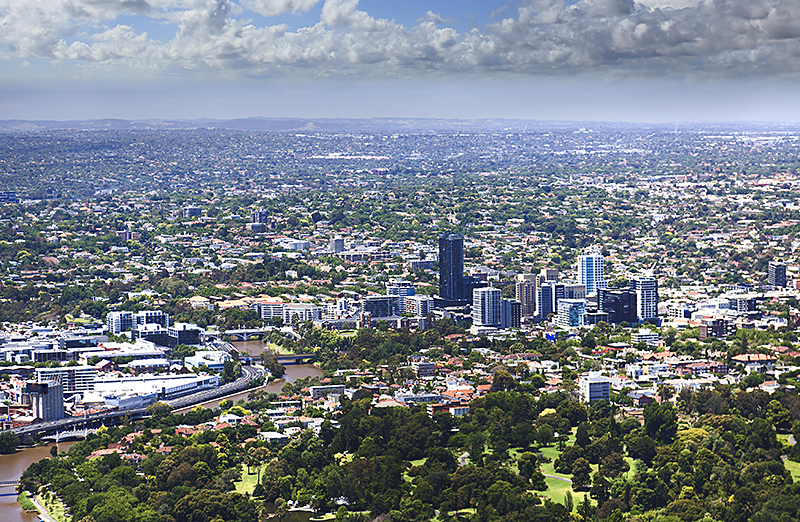
Through the years, other environmental features have also helped cities develop. Since ancient times, for example, people have traveled in ships to trade with people of other nations. Many cities that lay near large bodies of water became important trading centers. They included Istanbul, Turkey; London, England; Shanghai, China; and Venice, Italy. Chicago, in the United States, Melbourne, in Australia, and Toronto, in Canada, developed partly because they lay along important land and water transportation routes. Many cities, including Manchester, England, gained importance as manufacturing centers because of nearby minerals or other raw materials needed for manufacturing. Some cities owe their development chiefly to climate. For example, the warm, healthful climate of parts of Florida and the southwestern United States attracted many people.
Social organization.
Certain rules of behavior are needed to maintain order, peace, and security in any community. Since Neolithic times, most people have agreed that it is wrong to steal from or harm others in their group. In turn, people expect that their own rights to safety and property will be respected by other members of the group. People also have duties toward their group as a whole. They have often fought to protect their group from enemies.
The maintenance of order in groups also requires some system of authority. In the family, the most basic social group, parents have authority over their children. In larger social groups, including cities, citizens must accept the authority of government.
Neolithic villages had a simple social organization. People had to respect each other’s rights, and children had to obey their parents. But most villages had few government officials as we think of such officials today. Someone probably took care of the surplus food, and there may have been an official who planned for defense against outsiders. As cities grew, to keep order, governments took on a greater role in managing community affairs and providing services for the people. Government officials organized trade, planned military action, and conducted religious worship. The number of workers employed by cities also increased. Today, these workers include mayors, city planners, garbage collectors, police officers, and teachers.
Population growth.
Only about 10 million people lived at the beginning of the Neolithic Period. The population of the world reached about 500 million by A.D. 1650 and over 7 1/2 billion by 2020. This population explosion led to an increase in both the size and number of cities.
Two other trends also have aided the development of cities. One trend—sometimes called population implosion or population urbanization—is the increasing concentration of people in small parts of Earth. These parts are the cities and their surrounding areas. The other trend—sometimes called population displosion or population diversification—is the movement to cities by people of a variety of cultural backgrounds. Through the years, cities came to include people of different racial, religious, national, and language groups. This mixing of people brought about cultural diffusion, a process by which people of different backgrounds learn from each other by exchanging ideas. Cultural diffusion ranks among the most important factors in the development of civilization.
Ancient cities
Thousands of years passed before the Neolithic villages developed into cities. The first cities had appeared by 3500 B.C. in the Tigris-Euphrates Valley. The valley was in the lower part of Mesopotamia, in what is now Iraq. The first Chinese cities probably began to develop by the mid-1600’s B.C. Cities developed in east Africa by about 500 B.C. and in Central America, by about 200 B.C.
Ancient cities differed from Neolithic villages in several ways. The cities covered more land than the villages, with large public buildings for worship and storage of grain or weapons. More people lived in cities than in villages, including more people from different backgrounds. The work of the city people also differed from the work of the village people. Almost all village workers were farmers, but many city people had nonfarm jobs. Merchants became a new group of workers in early cities, and the number of craftworkers and government officials continued to grow.
Description.
An early ancient city covered less than 1 square mile (2.6 square kilometers). Most of its people lived near the city’s water supply because they had to get their own water and carry it home themselves. Technological advances enabled some ancient cities to grow. Rome, for example, built structures called aqueducts for transporting water over long distances and grew to more than 4 square miles (10 square kilometers). 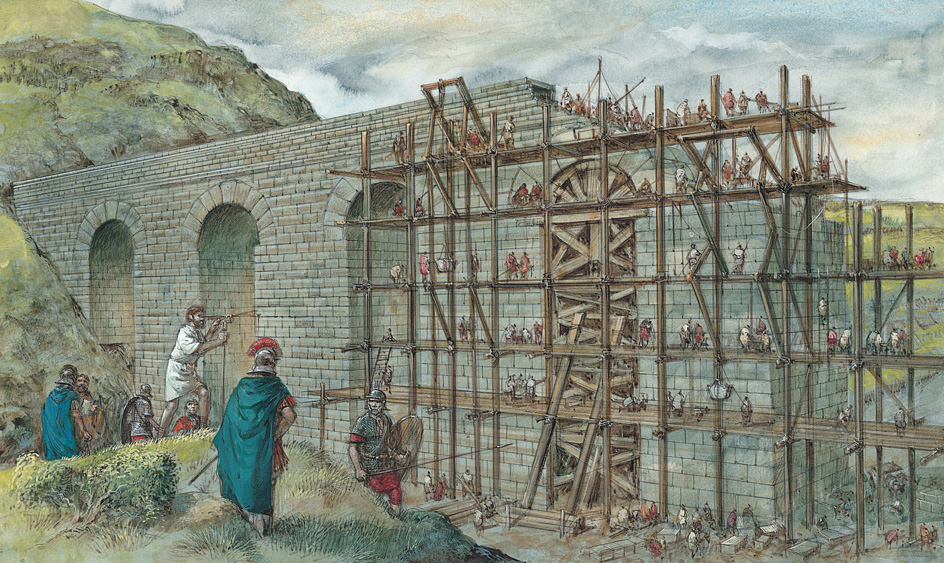
Many ancient cities had walls surrounding them for protection against enemies. Hills also helped protect some ancient cities. Rome was built on hills, and Athens was built around a hill where the people could go if enemies attacked the city. The central area of most cities included a place of worship, the ruler’s palace, and a storehouse for food. In some cities, a wall surrounded this central area to keep out both enemies and hungry citizens. Houses stood crowded together around the central area.
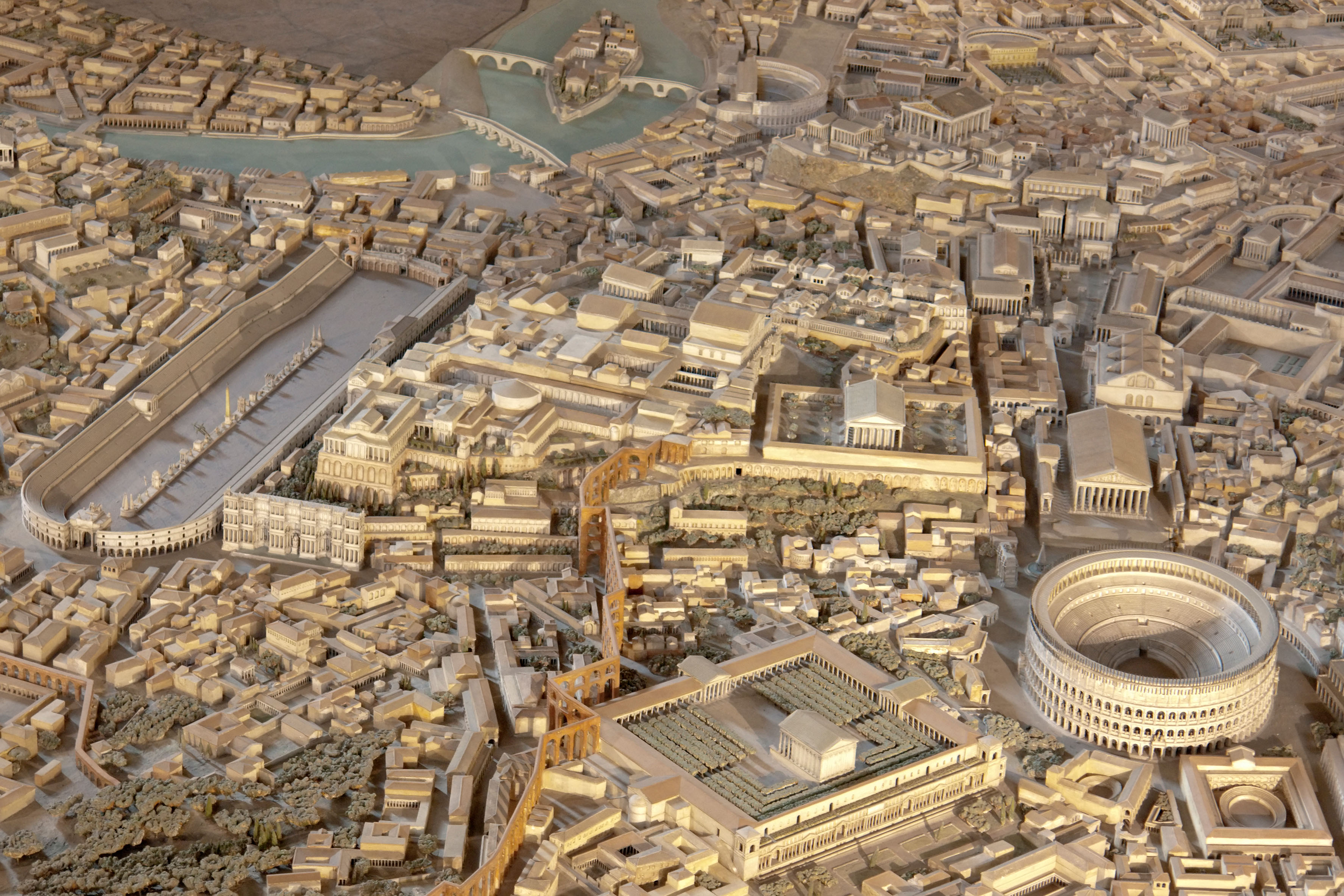
Sanitation was a major problem in ancient cities, most of which had no system for getting rid of wastes. The people simply threw garbage and other wastes into the streets or piled them up outside the city wall. As a result, disease spread quickly and death rates were high. The narrow, unpaved streets often turned into seas of mud when rain fell.
Some ancient cities reached a more advanced degree of development. Rome, for example, had a sewer system and a water supply system. Teotihuacán, in what is now Mexico, contained a planned street system and apartment buildings. Other advanced ancient cities included Athens, Babylon, and several cities of Egypt. 
The people.
Ancient cities had more people than did Neolithic villages but far fewer than cities of today. Most of the cities had populations of under 10,000, though other cities were much larger. For instance, Athens, Greece, had about 25,000 people in 1200 B.C. Its population reached about 155,000 by 430 B.C.
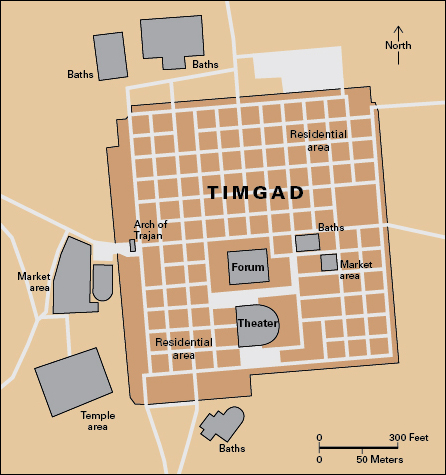
Often, residents of the first cities formed homogeneous societies. That is, they had the same racial and geographic backgrounds and shared the same religious beliefs and other cultural characteristics. But some cities drew people from a variety of backgrounds. Many people moved from the countryside in search of a better life in the city. Others had been captured in war and were brought to cities to serve as slaves. The arrival of newcomers gave the cities heterogeneous societies, made up of people of many different backgrounds.
The formation of heterogeneous societies caused cultural diffusion, but it also had undesirable effects. In many cities, the original group and the newcomers distrusted each other. Their distrust often led to discrimination, the unequal treatment of people from different cultures.
The people of some ancient cities were divided into classes. The upper class included government and military officials, rulers, and high priests. The lower class consisted of farmers, craftworkers, and merchants. At the bottom of society were the newcomers, especially slaves and people from greatly different backgrounds than those of the native citizens. The newcomers were often forced to live in separate areas of the cities, or outside the cities. They had the poorest housing.
Most education was informal, with children being taught by parents, wise elders, or religious groups. Often, only the more privileged boys received such education. Other boys learned a craftworker’s trade or received no education at all. Most girls learned household duties from their mothers.
People often worshiped a number of gods. Many thought that angry gods caused personal misfortune. Festivals were held to honor and to please the gods. Many ancient peoples, including the Egyptians, Greeks, and Romans, built beautiful temples and monuments and dedicated them to the gods. Some Indians of Central and South America also followed this practice. For example, ancient Indians constructed the famous religious buildings at Monte Albán, in what is now Mexico.
Economy.
Just as technological progress in agriculture had made Neolithic villages possible, further advances in farming spurred the development of ancient cities. The invention of new farm tools and the discovery of new methods of cultivation, irrigation, and animal raising helped increase food surpluses. As the surpluses grew, more people stopped farming and went to cities in search of other work.
Craftworkers became an important group in the cities. The first craftworkers wandered from place to place because no one community had enough work for them. But as cities grew large enough to support them, craftworkers began settling permanently. 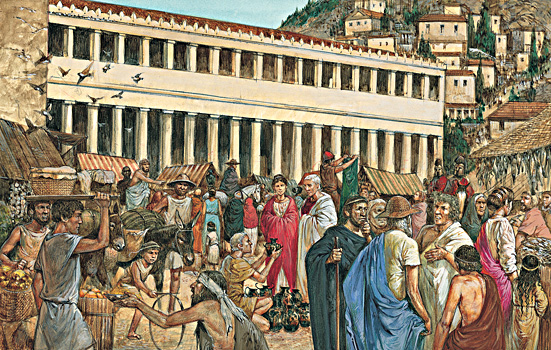
The first craftworkers sold the products they made. Later, city life grew more complex, and a new group of working people, the merchants, appeared. This group sold the products made by others.
The merchant class was a result of technological advances in transportation. The wheel, probably invented in the Tigris-Euphrates Valley about 3500 B.C., gradually came into general use during ancient times. Wheeled vehicles and vastly improved roads enabled people to move large amounts of goods within cities and from city to city. Improvements in water transportation enabled merchants to trade their goods both in nearby places and in distant lands. Foreign trade became important to the economy of some ancient cities. For example, trade networks connected cities throughout the Middle East with cities in northern and eastern Africa. The Phoenicians played a leading part in the development of trade over large bodies of water. The Phoenician city of Tyre became an important shipping port (see Phoenicia).
Government.
Religious leaders performed most duties of government in the earliest communities. Many people believed that their leaders’ authority came from the gods. Therefore, the leaders were responsible to the gods, not to the people. As communities developed, emperors, kings, and other nonreligious rulers took over the power to govern. These rulers developed laws that could be enforced by military and police power. But many people still believed that the right to govern came from the gods. As a result, some rulers governed both by divine right and the civil power to enforce laws.
Local administrators governed many ancient cities. They were responsible to the emperor, the king, or some other higher authority. Some cities, including Athens, were independent of any higher authority. Their rulers governed the city and its outlying area. Such regions were called city-states.
The local rulers taxed the craftworkers, farmers, and merchants heavily to pay the costs of operating the government, constructing public buildings, and carrying out other projects. The people had little or no voice in the government. Athens and some other Greek city-states were exceptions. In those communities, all adult males who were not slaves helped determine government policy. See Democracy (Origins of democracy).
Medieval cities
The Middle Ages began after the collapse of the West Roman Empire in the A.D. 400’s and lasted through the 1400’s. The Roman Empire ruled a vast region that, at its height, included most of Europe, the Middle East, and the northern coastal area of Africa. Rome was its capital.

The Romans helped build cities throughout their empire. They also built a network of roads that served as trade routes between the cities. The empire declined during the 400’s, and Germanic tribes divided it into many kingdoms. After the end of the Roman Empire, many people left the cities and went to work on farms. Trade became more local. Some new cities appeared, however, as new trade patterns gradually emerged in northern Europe, especially around the North Sea. Trade regained importance after about 1000, and cities grew more and more rapidly.
Description.
Many European medieval cities had a similar layout. A typical city covered less than 1 square mile (2.6 square kilometers) and had walls around it for protection against invaders. The city’s main church—in many cases a magnificent, towering structure—stood in the central area. The church was the city’s biggest and most expensive building and a symbol of the medieval emphasis on religion. The chief government buildings and the marketplace were near the church. Wealthy people lived near the center of the city, and the poor lived away from this area. Some poor people lived in huts outside the walls.
Medieval cities, like ancient cities, were dirty and unhealthful. Disease spread rapidly, partly because the people had no sanitary method for disposing of garbage and other wastes. From time to time, disease wiped out a large part of a city’s population.
The walls around medieval cities limited living space. Land was costly, so people began to construct five- and six-story buildings. Overcrowding became a problem during the late Middle Ages, starting in about the 1300’s. Some cities solved this problem by knocking down the walls and rebuilding them farther out. Florence, Italy, increased its size three times in this way. Other cities let their walls stand but built new cities nearby.
Scholars believe that Eastern medieval cities had the same general layout as European cities. Eastern trade remained strong, and many Eastern cities were large and prosperous throughout the Middle Ages. African cities also continued to grow, and their trade networks extended to people in nearby forests and to Middle Eastern merchants. Such American Indian cities as Tenochtitlan in what is now Mexico and Cusco in modern-day Peru prospered until the 1500’s.
The people.
Many medieval cities contained only 300 or 400 people. Even Lübeck, Germany, an important city in northern Europe, had a population of only about 10,000 during the 1200’s. In that same period, London, with about 40,000 people, Venice, with about 100,000, and Paris, with about 150,000, ranked among the biggest cities in Europe. Many Asian cities had more people. During China’s Song dynasty (960-1279), the populations of the cities of Kaifeng and Hangzhou (also spelled Hang-chou) may have reached more than 1 million.
European medieval cities attracted people from a variety of backgrounds. But the people tended to settle in quarters (neighborhoods) with people of their own group. Some quarters resembled separate cities. They had their own markets, water supplies, and churches or synagogues. The system of separate quarters helped limit conflicts between various groups, but it also limited the exchange of ideas. Some quarters, called ghettos, were used to persecute certain groups. For example, many cities in Europe forced Jews to live in ghettos and to pay extra taxes.
Upper-class medieval people lived in large houses that had separate rooms for bathing, cooking, eating, sleeping, and religious and social activities. Most people in the middle and lower classes continued to live in homes with one or two rooms, which they used for all purposes. Few people in a medieval city had much comfort or privacy.
During the Middle Ages, children, parents, grandparents, and other relatives often lived in the same house. Some medieval households also included servants and workers associated with the family’s economic activity. For example, some young people worked as personal servants to nobles and lived in the nobles’ houses. Many apprentices (young people learning a craft) lived in the homes of the skilled workers who taught them.
Religion played a vital role in medieval life. Major religions included Christianity in Europe, Islam in the Middle East, and Buddhism and Hinduism in the East.
In Europe, the Christian church had great influence. Church officials owned much land and could tax the people. The church also performed such important activities as baptism, marriage, and burial services. The church could ban people from religious services through its power of excommunication. To be excommunicated was a public disgrace. In addition, people who did not belong to the Christian church were often treated harshly. For example, Jews in the Christian cities of medieval Europe suffered much persecution. 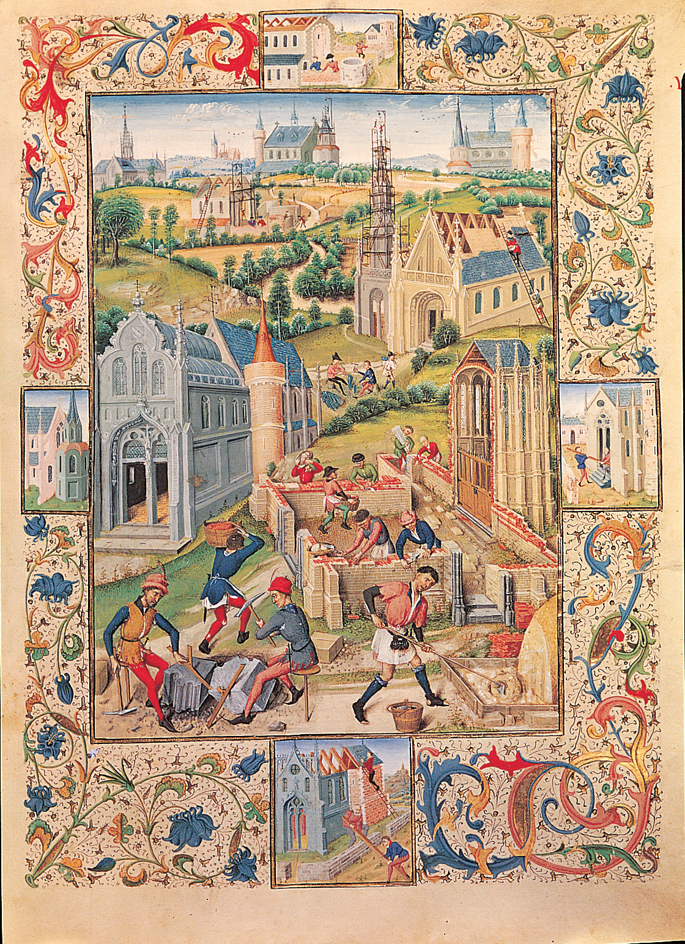
In the late Middle Ages, the Christian church also influenced religious life in the cities of Africa, North America, and South America. Missionaries from Europe traveled to these continents and converted many of the original inhabitants to Christianity. In Europe, the Christian church played an important part in medieval education and organized schools.
Economy.
During the Middle Ages, much land in Europe was divided into large rural estates called manors. Lords and bishops controlled most of the land, and tenants farmed it for them. However, some tenants owned all or part of their land. During the 1000’s, many tenants and landless farm laborers began moving to cities to earn a living. Some became merchants or craftworkers. Others farmed land outside the cities and helped supply food to the city dwellers.
The growth of trade played the leading part in the economic progress of medieval cities. Trade had become more local after the fall of the Roman Empire, but some cities continued to trade widely. Venice, Italy, for example, traded with Constantinople (now Istanbul, Turkey), throughout the Middle Ages. From about the 1000’s, the population of Europe and its cities grew more and more rapidly. Trade also expanded. The increased trade brought further growth and prosperity to European cities.
In addition to Venice, several European cities played an important part in the economic growth. They included Genoa and Pisa in Italy, Bruges in Flanders, and the French cities of Nantes, Orléans, Paris, and Rouen. Other important trading centers were Antwerp in what is now Belgium, and Cologne, Hamburg, and Lübeck in what is now Germany. The Chinese cities of Guangzhou, Hangzhou, Kaifeng, Beijing (also called Peking), and Suzhou (also spelled Su-chou) became leading Asian centers of trade.
Technological advances also aided the economic progress of medieval cities. New products included barrels and tubs, gunpowder, mechanical clocks, paper, printing presses, and soap. The use of water and wind power to make products increased production, thus raising standards of living and stimulating city growth. The invention of the printing press about 1440 enabled people to receive information about business and government more quickly than ever before. Newspapers and printed books increased the exchange of ideas among people.
Craftworkers and merchants benefited greatly from the economic progress. Craftworkers could make more goods—and merchants could sell more products—because of expanding trade and technological advances. The new prosperity drew even more people to the cities, providing additional markets for the craftworkers and merchants.
The craftworkers and merchants established organizations of workers called guilds. There were guilds for merchants and craft guilds for bakers, brewers, goldsmiths, tailors, weavers, and other workers. By banding together, the guild members could attract new members, train them, collaborate on projects, and increase their profits. In groups, they could buy large quantities of materials and goods at lower prices. The guilds allowed only their members to make and sell products. They kept memberships from growing too large so each member could prosper. 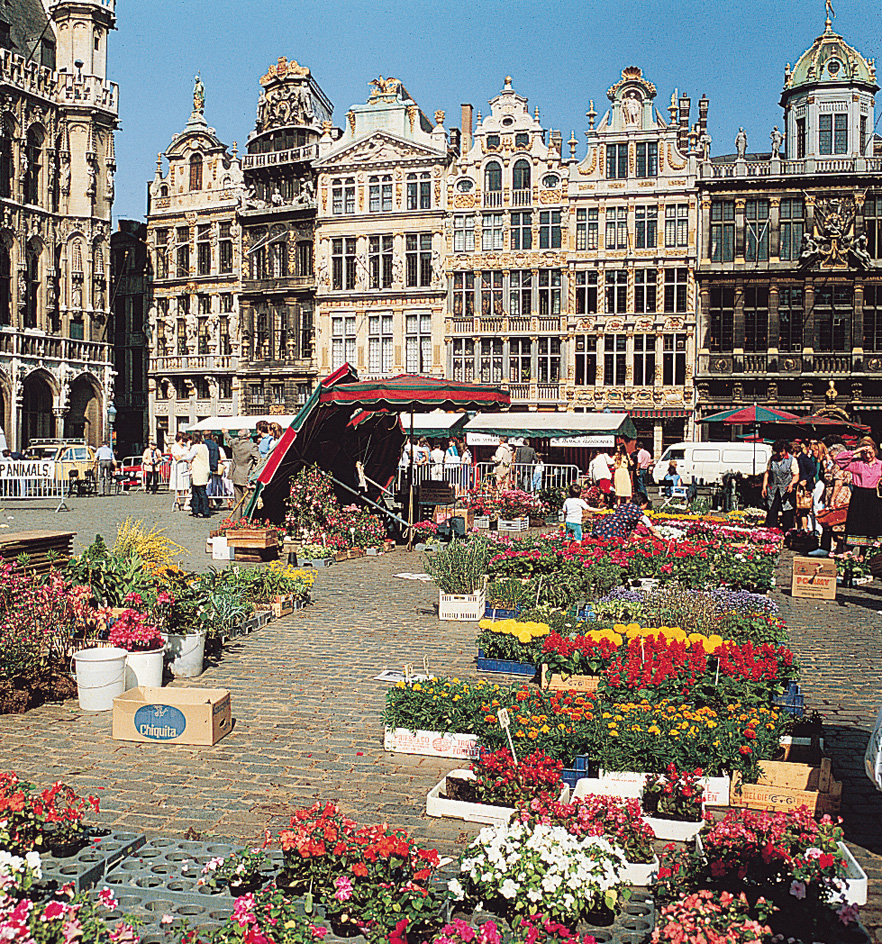
Government.
During the Middle Ages in Europe, many cities were governed by a lord or bishop who had authority over the land on which they stood. Sometimes these rulers could be more powerful than the king.
As cities gained importance during the 1000’s and 1100’s, many city people began to resent the interference of lords and bishops in local affairs. Led by the merchant and craft guilds, citizens fought for the right to govern themselves.
Numerous cities succeeded in their struggle for self-government, though women and many other groups could not participate. In Milan and other Italian cities, male citizens won the right to elect consuls (officials who ran the city government). The practice of electing consuls then spread to other parts of Europe. Cities in Flanders and northern France achieved a high degree of independence. The citizens made their own laws and elected their own officials. Guild members ran many of the cities. Some kings supported the people in their fight for self-government because strong city governments weakened the power of the lords and bishops.
During the 1400’s and 1500’s, many kings gained power over large regions. They set up strong central governments, which reduced the power of cities.
In the East, government remained centralized throughout the Middle Ages. The king or emperor appointed local officials, who had to prove their leadership capabilities. In China, a candidate for public office had to pass a civil-service examination. Those who did, even though they were of modest social background, became the famous Mandarins, who symbolized culture and civilized leadership. Hindu, Buddhist, and Confucian priests were similarly respected figures who spread the idea that younger persons should respect their elders and care for them in old age.
Industrial cities
From the 1500’s to the 1700’s, cities throughout the world grew and gradually changed. But the basic pattern of cities and city life was shaken in the 1700’s and early 1800’s, when a period of rapid industrialization called the Industrial Revolution took place. During this time, many cities in Europe and North America changed greatly. These communities—called industrial cities—became centers of large-scale manufacturing. The manufacturing boom resulted chiefly from the invention of steam engines and new machines. The machines could do the work of many people, and the steam engine easily powered the machines as well as railroads and ships. The expansion of trade among the nations of Europe and North America also aided the growth of manufacturing.
The Industrial Revolution caused dramatic changes in city life. Skilled craftworkers had trouble finding work because machines could make the same products quickly and cheaply. Instead, people in many cities worked in large factories, lived near the factories, and depended on manufacturing jobs for their livelihood. They were often overworked and poorly housed, though living conditions improved during the 1800’s and early 1900’s. Even people in cities with few factories became dependent on manufacturing. They often sold materials to the industrial plants or shipped finished products abroad. 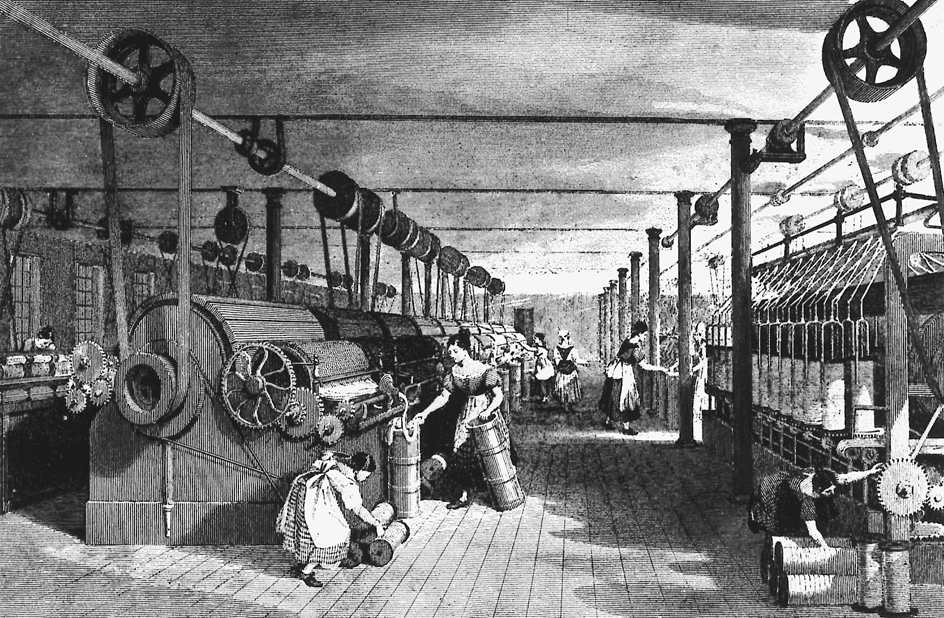
The Industrial Revolution had little immediate effect on cities outside Europe and North America. But in the late 1800’s and 1900’s, many cities throughout the world became involved in the growing networks of manufacturing and trade created by industrialization. Some cities of Africa, Asia, Australia, and South America became industrial centers, though others never industrialized.
Description.
Some industrial cities developed from medieval cities. When a city became too crowded, the walls were knocked down and the city expanded. Other industrial cities grew up where there had been a fort, a trading post, a village, or open land. Development in open areas occurred most commonly in North America.
Factories, warehouses, and railroad yards stood near the center of an industrial city. Nearby, poor people lived in cheap houses and apartment buildings. The poor had no means of transportation, and so they needed to live within walking distance of their jobs. As cities grew, the central areas became crowded and unhealthful. Many wealthy merchants and factory owners built big houses in the outer sections of the city. They used horse-drawn carriages for travel to the central area. In the 1800’s, some people began to move to the suburbs. They rode to work on railroads or streetcars.
Industrial cities had sanitation problems similar to those of earlier cities. Garbage and other wastes produced health hazards because of inadequate sanitation systems. In addition, a new problem—pollution from industry—became a health hazard. Factories polluted the waterways with chemical wastes and polluted the air with harmful gases. They also created huge dumps of garbage, rusting metals, and other wastes. 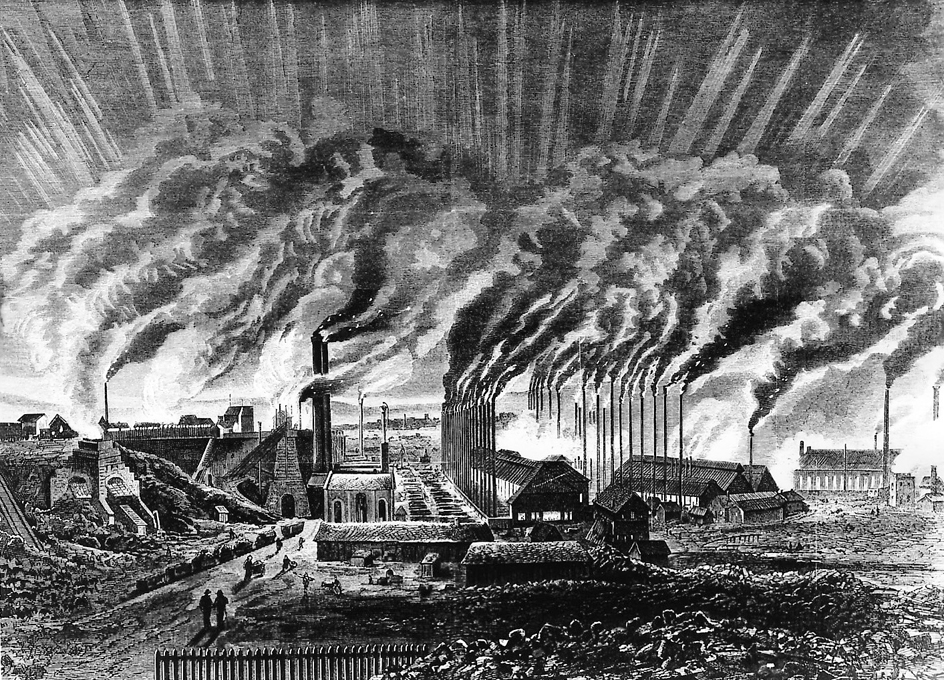
The gridiron pattern of city blocks, which remains common today, came into widespread use in industrial cities. In this pattern, buildings are spaced more or less evenly apart, and groups of them form rectangular blocks. Streets, generally of the same width, separate the blocks from one another. Most earlier cities had a more irregular arrangement of buildings and many winding streets. The regular pattern made it easy to extend a city in any direction. But it also gave a city a monotonous appearance.
The people.
City populations increased greatly during the Industrial Revolution for two main reasons. First, though the population of the world was increasing faster than ever before, health and food distribution improved. Second, new agricultural methods reduced the need for farmworkers. These workers flocked to the cities and took jobs in factories.
Chicago and Manchester, England, provide two examples of the tremendous growth of industrial cities. Manchester’s population grew from about 6,000 in 1685 to about 303,000 in 1851. Chicago’s population jumped from about 4,000 in 1840 to more than 1 million in 1890.
In the early years of the Industrial Revolution, most city people lived under miserable conditions. Men and women—and even many children—worked 12 or more hours a day in dark, dirty factories. They held monotonous, tiring jobs, such as tending a machine or carrying heavy materials. The factories had few safety rules, and accidents killed or injured many workers.
The workers earned barely enough money to feed themselves and their families. During economic slumps, factories laid off large numbers of workers who had nowhere to turn for relief. They could no longer farm the land for food, and governments had not yet begun to provide relief for the needy. Sometimes workers organized protests against their living conditions.
The workers lived in poorly built, dirty tenements (crowded apartments), row houses (groups of houses without space between them), and cellars. In 1842, for example, about a fifth of the people in Liverpool, England, lived in cellars. The early industrial cities had widespread disease and high death rates. Pollution filled the air and the waterways, and rats and insects spread illness. The rich and the poor alike fell victim to pollution and disease. Until the 1830’s, the homes of even most of the rich lacked plumbing for toilets and bathtubs. Most workers did not have these facilities until the late 1800’s or the early 1900’s. In the industrial cities of some developing nations, many workers still do not have indoor plumbing.
In time, the standard of living in most industrial cities improved. The mass production method used in the factories reduced the cost of making goods and thus cut the cost of the goods to customers. Many factory workers formed labor unions and threatened mass strikes to support their demands for higher wages and better working conditions. Finally, governments passed wage and welfare laws that helped the workers. The governments also took steps to improve sanitation.
A small percentage of people had great wealth during the Industrial Revolution. Factory owners made huge profits from the business boom and paid their workers little. Bankers and financiers invested money in the new industries and made big profits on their investments. Merchants sold more and more goods as city populations grew. These rich people lived in large houses and could afford many luxuries.
During the 1700’s and 1800’s, charitable organizations and governments started tuition-free schools in many cities. These schools gave some poor children a chance to have a formal education. But many of the teachers lacked good training, and the schools often did not have enough textbooks. Also, many children could not go to school because they had to support their families. Children from wealthy families attended private schools or studied in their homes under tutors.
As in medieval times, the cities included people from a variety of backgrounds. People still tended to settle in neighborhoods with others of the same background. But various groups had much more contact with each other than they had in medieval cities. People from all groups worked together in factories, and children from many groups attended schools together. The influence of the family on the behavior and ideas of the individual remained strong. But the influence of people outside the family—fellow workers, friends, teachers, and others—increased greatly.
Economy.
The flow of workers from farms to cities rose tremendously during the Industrial Revolution. The manufacturing boom provided more jobs in cities than ever before. At the same time, technological advances in agriculture reduced the number of jobs available on farms. The invention of the reaper, for example, enabled one farmer to do the work of many.
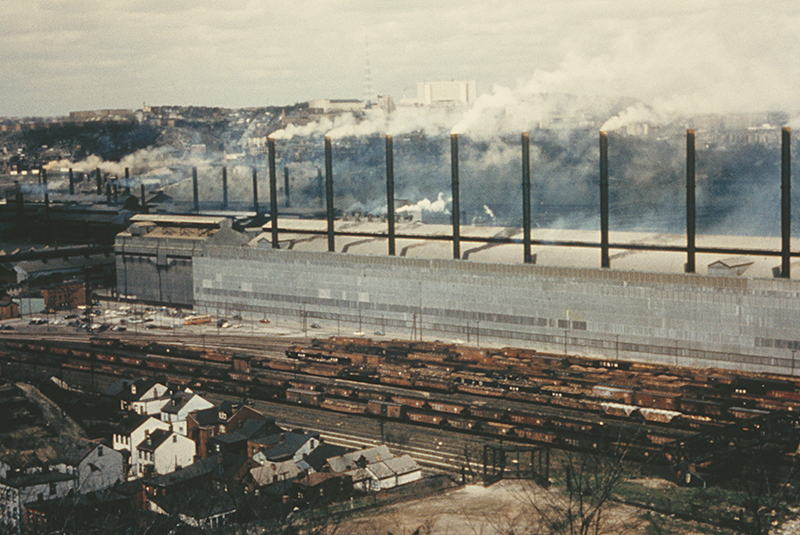
Large numbers of craftworkers became unemployed or went to work in factories. Craftworkers made their products slowly and usually used hand tools. But factory workers could make many of the same products with machines. These mass-produced goods were easier to make, and they could be sold more cheaply than the craftworkers’ goods. Many craftworkers found that they could not compete with the factories, and they were forced out of business.
The factory system of manufacturing began the greatest economic boom in history. With machines, people turned out products more quickly and cheaply than ever before. The savings in production costs—together with more generous policies toward workers—resulted in greater earnings for workers. As their earnings increased, workers could buy more goods. The increased demand for goods led to increased production. Businesses built new factories and expanded existing ones.
The new business created jobs for more people, and the new jobs meant that people had more money to spend. Thus, the demand for products increased again. The newly created jobs also led to formation of a middle class. This new group of people had jobs that enabled them to live more comfortably than laborers, but not as well as aristocrats.
Technological advances in transportation and communication aided the economic boom. The development of the steam-powered railroad train in the early 1800’s gave businesses a way to send heavy loads of products and raw materials over long distances. The railroad became the chief method of transporting goods across land. The invention of the telegraph about 1837 and the telephone in 1876 made communication more efficient than ever before. Buyers could send and receive orders for goods more quickly than by using the mail.
Business executives had to spend enormous amounts of money to obtain raw materials, build factories, and make and operate machines. The cost was met in part through the use of the economic system called capitalism. Under this system, bankers and private investors put up money to help pay for business operations. Their investments entitled them to share in the profits of the business. In early industrial cities, only the wealthiest people could invest in businesses. But as time went on, many more people took part in the system.
Government.
City problems increased in the 1700’s and 1800’s, and governments took steps to improve city life. Governments of some industrial nations passed laws during the late 1800’s and early 1900’s designed to help workers. These laws included measures that regulated child labor and provided income for injured workers and for families of workers who were killed on the job. Other laws improved public health care and provided food and shelter for the unemployed.
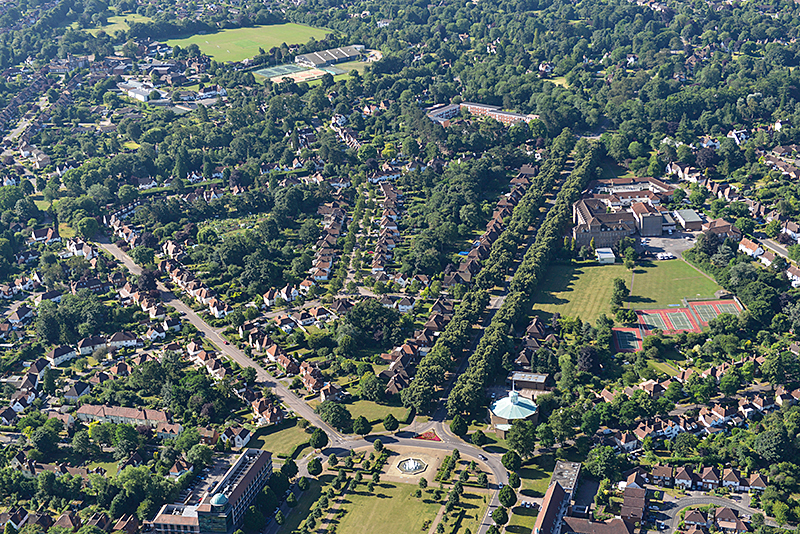
In most countries, the central government passed the laws that benefited city people. In the United States, the federal government generally left city affairs to the state governments. Reform bills had to be approved by the state legislatures. But the majority of the legislators rep resented farmers and business owners. For this reason, reforms for U.S. cities came about slowly, led by a combination of government leaders, civic and business groups, and charitable organizations based on religion and national origin.
Metropolitan cities
Cities grew more than ever during the 1900’s. By the early 2020’s, more than 500 cities had over 1 million people. São Paulo, Brazil, one of the world’s largest cities, had a population of about 11 million. New York City, the largest city in the United States, had about 9 million people. 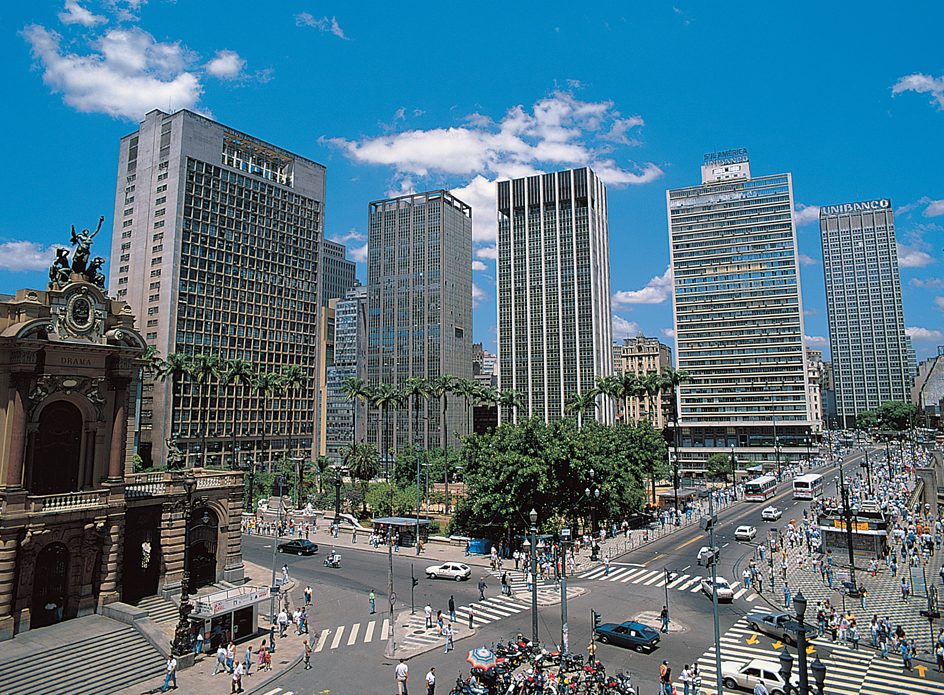
Even more striking growth has taken place in suburban areas near big cities. Large numbers of people have settled in suburbs since 1900. The great masses of people that had filled the cities are now crowding both the cities and the land that surrounds them. Besides homes, many suburbs today contain offices and shopping centers. Suburban residents can work and buy the goods they need without traveling to the city.
A city with suburbs is a metropolitan city, and the city and the developed area around it form a metropolitan area. The word metropolitan comes from Greek words meaning mother city. The São Paulo metropolitan area is one of the largest metropolitan areas in the world. It has more than 20 million people. The largest cities are all metropolitan cities. 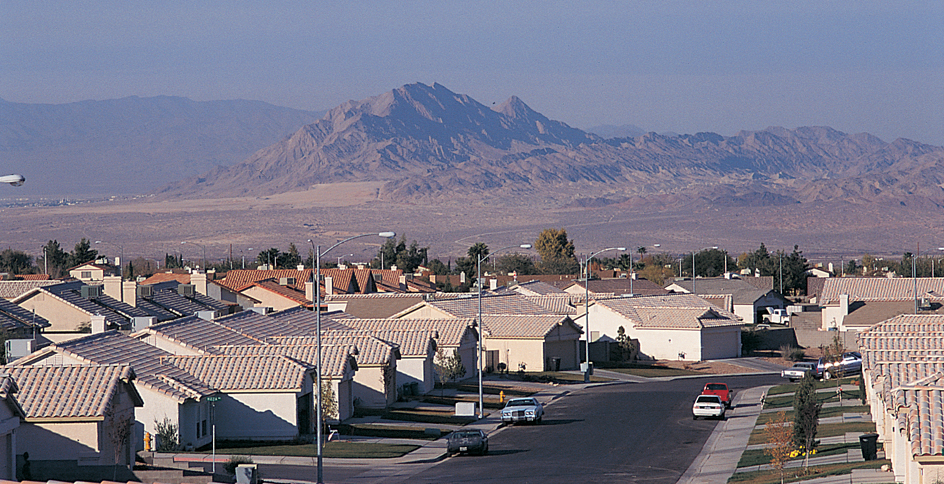
The population explosion has played an important part in the development of metropolitan areas. By 2020, the world’s population was about 6 times as large as it was in 1850. This rapid growth led to overcrowded cities, causing large numbers of people to move to outlying areas.
In addition, economic growth aided the development of metropolitan areas. The booming economies of industrial nations helped millions of people achieve a high standard of living. As a result, more people could afford expensive homes in the suburbs. In many nations, governments helped pay for roads and transportation systems in new areas. People could easily travel to the city on streetcars and buses, subways, and railroads.
Motor vehicles, a major technological advance of the 1900’s, also helped metropolitan areas develop. The automobile made it possible for millions of people to live far from jobs, schools, and shopping. Motor trucks became cheaper than railroads for transporting goods over long distances. The lower costs encouraged many factories and stores to locate in the suburbs.
Description.
Today’s cities are much larger than those of earlier times. In the late 1400’s, for example, Paris covered about 3 square miles (8 square kilometers). The city now covers 41 square miles (105 square kilometers).
The layouts of most metropolitan cities in the United States and in many other countries resemble one another. The original business section lies downtown, in the center of the city. It contains banks, museums, government buildings, and company headquarters. People from throughout the metropolitan area work in offices there and shop in downtown stores. The business section covers a small area. But it can serve thousands of people daily because many offices and stores are in large skyscrapers. 
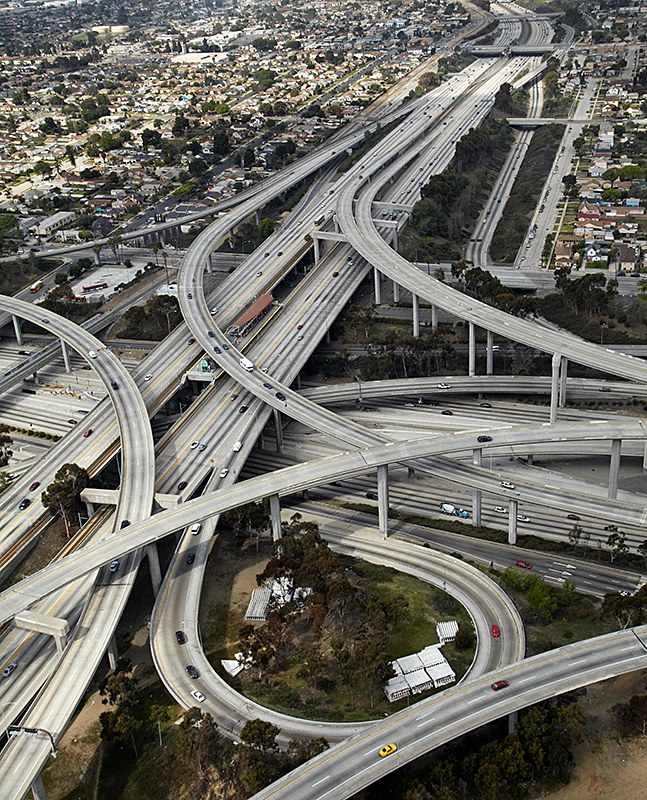
In the past, most business people worked downtown and lived nearby. However, many metropolitan areas today are decentralized. They contain various centers of business and housing as well as the original city center.
An industrial region of factories, warehouses, and shipping yards lies next to or encircles the downtown section of many cities. The residential areas, where most of the city dwellers live, begin beyond the industrial region. The oldest and most run-down houses are in the residential area closest to the city center. Most of the city’s lower income people live in this area, often called the inner city. In the mid-1900’s, local and federal governments began urban renewal projects in many inner cities. These projects replaced some of the worst buildings with new, low-cost housing. In the United States, much of this new housing consisted of high-rise apartment buildings.
Some neighborhoods were built far from the inner city, in the distant suburbs or exurbs. Each residential area has its own stores or other businesses. In the suburbs, shopping centers may contain many stores—and several restaurants and movie theaters—in one building.
The main streets of cities and suburbs are often jammed with automobiles, buses, and trucks. At such times, traffic creeps along slowly. Many wide express ways have been built to help carry the traffic. However, the number of motor vehicles has increased so greatly that traffic jams occur on expressways and on streets.
In the largest metropolitan areas, many people no longer spend much of their time downtown. They can live, work, shop, and find entertainment in the suburbs. In some cities, this suburban way of life led to the closing of old stores and businesses in the city center. But in the late 1970’s and the 1980’s, some suburbanites who worked downtown grew tired of traveling between the suburbs and the city on a daily basis. In response, builders began to construct new luxury apartments and homes in and near downtown as part of downtown renewal projects. This pattern grew stronger around 2000 in the United States, Canada, and Australia, especially in the largest cities.
Many cities have serious pollution problems. Motor vehicles, factories, and other sources create so much air pollution that it may hang in the air like dirty fog. The problem is especially critical in Chinese cities, where coal is still used to provide most of the country’s electric power. Air pollution threatens the health of the people who live in cities. City wastes cause water pollution when they are poured into waterways. These wastes kill fish and make some areas unfit for swimming. In addition, many large cities have difficulty disposing of their refuse. The amount of refuse grows each year, but places to put it are quickly filling up.
The people.
The population of urban places has continued to increase since the Industrial Revolution. Today, about 55 percent of the people of the world live in urban areas. The United States classifies about 83 percent of its population as urban. In Canada about 82 percent of the population lives in urban places. In Australia, about 86 percent of the population lives in urban places. After 1945, suburban growth was faster than the growth of cities, but it slowed by the end of the 1900’s. In the United States, more people now live in suburban areas than in the central cities.
On the whole, the people in the metropolitan areas of northern and western Europe, Canada and the United States, and Australia and New Zealand have the highest standard of living. There are many more wealthy people and middle-income people than ever before. Many people in these societies live in metropolitan areas with good housing, send their children to well-equipped schools, and can afford the necessities—and many luxuries—of life. Workers in all occupations benefited from the booming economy and from the increased strength of the labor movement during the 1900’s. Nevertheless, the average wage for most West Europeans and North Americans stopped rising in the 1970’s. As has been true throughout history, many people live in poverty.
The existence of poverty ranks among the chief problems of today’s cities. The poor are often unable to find the jobs they need to improve their standard of living. They may lack the education or training to help them find good jobs. Discrimination on the basis of race, religion, sex, or nationality also limits opportunities for many people. In the United States, targets of discrimination in the 1800’s and early 1900’s included the Chinese, Irish, Italians, Jews, and Poles. African Americans and Hispanic Americans are among the groups that have suffered from discrimination in U.S. cities since that time. Cities throughout the United States have passed laws designed to prevent discrimination in such areas as housing and employment. 
Many poor people live in the inner city. This area is characterized by run-down apartment buildings that are crowded and close together. Many of the apartments have been divided, so that more than one family lives in quarters originally intended for a single family.
Most middle-class and wealthy people live on the edges of the city or in the suburbs. However, some live in apartment buildings downtown. Their homes are bigger and newer than those in the inner city. Many houses have large backyards where families can play and relax in privacy.
In the mid-1900’s, the movement to the suburbs increased dramatically. People moved out to find better housing and cleaner, quieter, and safer living conditions. They sought a better education for their children than that available in the inner city. Many schools in the inner cities rank low on various measures of educational achievement. 
Metropolitan areas are becoming more culturally diverse. People from many backgrounds live in the city and suburbs. However, residents with similar incomes, nationalities, and religions often live near each other.
Economy.
The economic boom that began during the Industrial Revolution of the 1700’s and 1800’s continued into the early 2000’s. The markets for products made in cities continue to grow. Nevertheless, periodic fluctuations (rises and falls) have occurred as markets have grown, with periods of recession and unemployment as well as growth. Recession is a decline in overall business activity. The population explosion created more buyers for more goods, and higher standards of living made it possible for people to buy an increasing volume of products. Many nations expanded their trade with other nations, creating new markets for their products.
Major technological advances have helped economic growth since 1900. These advances include the use of electricity and gasoline to run machines and the development of plastics and other materials to make new products. Other technological advances have been radio, TV, and the space satellite for communication; the automobile and airplane for transportation; and the computer to handle information needed by complex economies. The economies of advanced nations rely heavily on sales of such products as automobiles, computers, refrigerators, and television sets. Jobs created by technological progress include those of airplane pilots, computer operators, electricians, and mechanics. 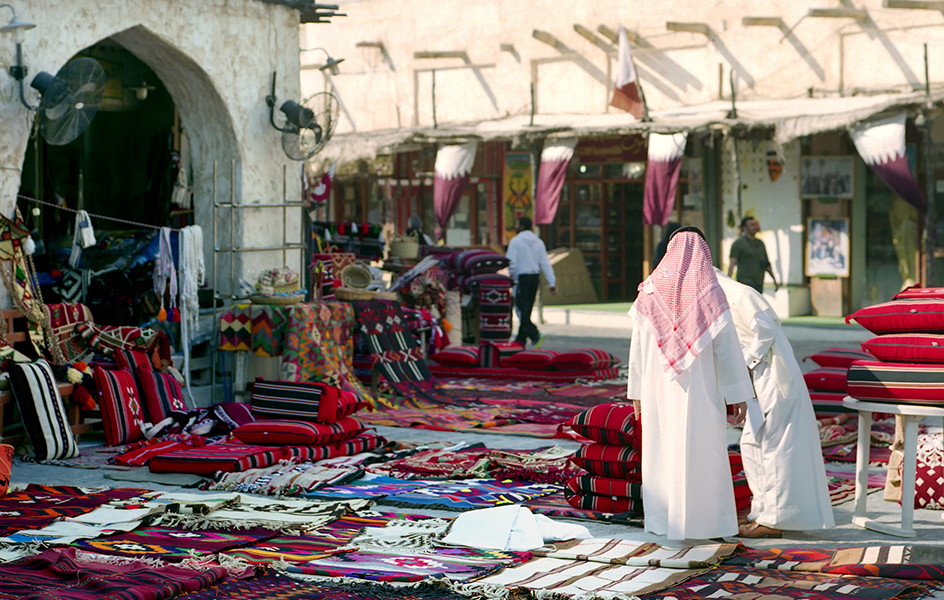
Metropolitan cities, like industrial cities, are manufacturing centers that provide jobs for thousands of factory workers. But today’s cities also have large numbers of jobs for workers in hundreds of other fields. Salespeople sell the products, and transportation workers move products from place to place. Office workers help keep businesses running smoothly. Construction workers build offices, factories, and housing units.
During the late 1900’s, technological advances and automation began to result in a decline in industrial manufacturing jobs. More and more people who worked in metropolitan cities turned to jobs in service industries. Such industries provide personal services instead of agricultural products or manufactured goods. Examples of workers in service industries include health care workers, truck drivers, retail clerks, and restaurant servers. To manage the affairs of cities, governments employ such service workers as accountants, fire fighters, and mail carriers.
Economic activity in metropolitan areas has become increasingly decentralized due to technological advances. Many business firms built factories or warehouses in the suburbs or abroad while keeping their main offices in the city.
Government.
The governments of metropolitan cities have grown into large, complex organizations. They face the challenging tasks of providing services for thousands or millions of people and of helping rebuild aging, decaying parts of cities. They are hard-pressed to obtain the necessary funds for these activities, and their problems increase as urban populations continue to grow.
Postindustrial cities
By the early 2000’s, many cities—especially those in developed nations—had experienced a decline in industrial manufacturing. The trend of manufacturers’ moving out of cities to suburbs and rural areas, where land was cheaper, had begun in the 1990’s. It continued in the early 2000’s, though it slowed somewhat because of the worldwide economic slump that began in late 2007. Also in the 1990’s, companies with headquarters in cities began to outsource some of their work. Outsourcing is the practice of delegating a business function such as manufacturing to an outside—often foreign—provider. These trends resulted in the loss of well-paying manufacturing jobs for many city dwellers.
As manufacturing declined in many cities during the late 1900’s, workers often retrained for jobs in such growing fields as information and communications technology and in service industries. Such positions include software engineer, web developer, computer systems analyst, financial planner, hotel guest service clerk, and chef.
By the early 2000’s, the economies of cities in advanced societies had become more focused on the design and marketing of such consumer goods as clothing and cars; on entertainment, including the film industry, the music industry, and sports; and on services, including health care, customer service, and restaurant dining. Television, the Internet, and affordable travel exposed people to different ways of life, and consumers began to demand more choices. Large corporations and older brand-name products were increasingly less able to satisfy people’s expectations for more personalized, distinctive products and services. Small firms that could more quickly accommodate subtle differences in taste for niche (specialized) markets grew more numerous and replaced some of the lost manufacturing jobs.
Cities continue to play a critical role as drivers of innovation and civic transformation. However, travel, media coverage, trade, outsourcing, and immigration have made all societies increasingly more global. It has become less important for workers to live in a particular city in order to work for a company that is based there. A call center in Manila, the Philippines, for example, may handle requests from customers in Europe and the United States for help with faulty products. People move more often and thus may feel less attached to a neighborhood or a city than people had in the past.
City challenges
Cities are the cultural, economic, governmental, population, transportation, and communication centers of the world. They are places where many people can find a job and earn a living and where some people can accumulate moderate or great wealth. In cities, people can also choose from a variety of cultural and recreational activities that add to the enjoyment of life. Nevertheless, cities have many physical, social, economic, and governmental problems. How to address these problems and develop solutions for them are leading challenges for today’s cities and cities of the future.
Physical problems
of cities include substandard housing, pollution, and traffic congestion. The term substandard housing refers to poorly constructed, run-down, unsanitary, or overcrowded dwellings. In developing nations, millions of people live in crude shacks or other dwellings that barely provide shelter. The people of advanced nations are better off. Even so, some housing in advanced nations is also substandard. Many governments have set up programs to improve housing for low-income families. However, population growth, lack of funds, the high cost of construction, and other factors continue to cause a worldwide housing crisis. 
Motor vehicles, factories, and other sources pollute the air with fumes that endanger the health of the people in cities. Urban wastes pollute waterways. City residents and industries produce extraordinary amounts of refuse. A government might want to end pollution by eliminating sources of contamination. But the government would need to close factories and prohibit almost all automobiles to do so, thus crippling the economy and inconveniencing the people.
Instead, citizens, governments, industry, scientists, and business people must work together to find new ways to reduce pollution. For example, most cities have introduced recycling programs, which cut down on refuse and the space needed to store it. Residents separate recyclable products from garbage, and city governments provide drop-off sites or pick up the products from homes. See Environmental pollution.
At any time—but especially during the morning and evening rush hours—the main streets of cities and suburbs can become jammed with motor vehicles. Such traffic jams delay and anger people trying to get to and from work and other places. Governments have built expressways, tried to improve public transportation, and taken other steps to relieve traffic congestion. Even so, getting from place to place in a metropolitan area continues to become more and more difficult, because of population growth and the ever-increasing use of automobiles. Governments are trying new solutions that include constructing or renovating neighborhoods to encourage more walking and bicycling and providing rental bikes near train stations in city centers. 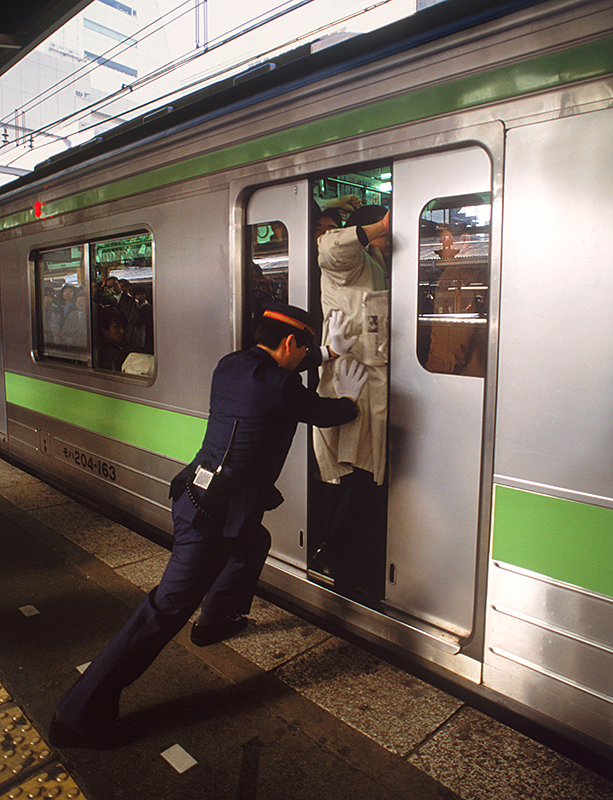
Social problems
in today’s cities include crime, juvenile delinquency, alcoholism, drug misuse, and friction between people of different backgrounds. Poverty—which is both a social and an economic problem—is discussed in the Economic problems section of this article.
Crime, alcoholism, drug abuse, and juvenile delinquency do not occur only in cities. But these social problems affect many people who live in cities. Social scientists point out that some individuals come to feel they have no place in society. These individuals may turn to crime or delinquency as a way of making money or lashing out at society. Or they may seek escape from their problems through the abuse of alcohol or drugs. Young people in the inner city sometimes turn to crime or drugs because they have grown up without enough guidance from adults.
Stricter law enforcement might help reduce crime. In New York City, New York, and Los Angeles, California, in the early 2000’s, police engaged in stricter law enforcement in so-called hot spots where the most serious crimes occurred. The number of such crimes decreased in both cities. However, in other U.S. cities in the 2000’s, charges of police misconduct increased and riots broke out after a number of African American men were killed during encounters with police officers. Critics expressed concern that civil liberties are being ignored or abused.
Private and governmental organizations try to reduce social problems. These groups publicize the dangers of turning to crime, alcohol, or drugs. They also work with people to try new ways of addressing specific problems. For example, tutoring low-income youths became a popular volunteer activity on many U.S. college campuses in the early 2000’s.
The population explosion has led to conflicts between groups of people. Often, groups with different cultural backgrounds fear and distrust each other and view each other’s way of life as inferior. Such attitudes have caused violence between groups. Examples since 1900 include conflicts between Protestants and Roman Catholics in Northern Ireland; Hindus and Muslims in India and Pakistan; Black and white people in South Africa and the United States; and language groups in India. In some places, governments have passed laws to protect minority groups from injustices. Leaders of immigrant groups have also sought innovative ways to work with one another. In the United States, for example, some Korean-American associations have offered courses to help young Hispanic and African Americans improve their reading and computer skills.
Economic problems.
Most people in the cities of advanced nations enjoy a high standard of living. But even in the best times, a city has many poor people. Poverty has existed since ancient times, but the wealth of some people in cities highlights the problem. In some inner cities, the loss of jobs and housing has left poor people homeless. When poor people also suffer discrimination, their anger has occasionally led them to riot. 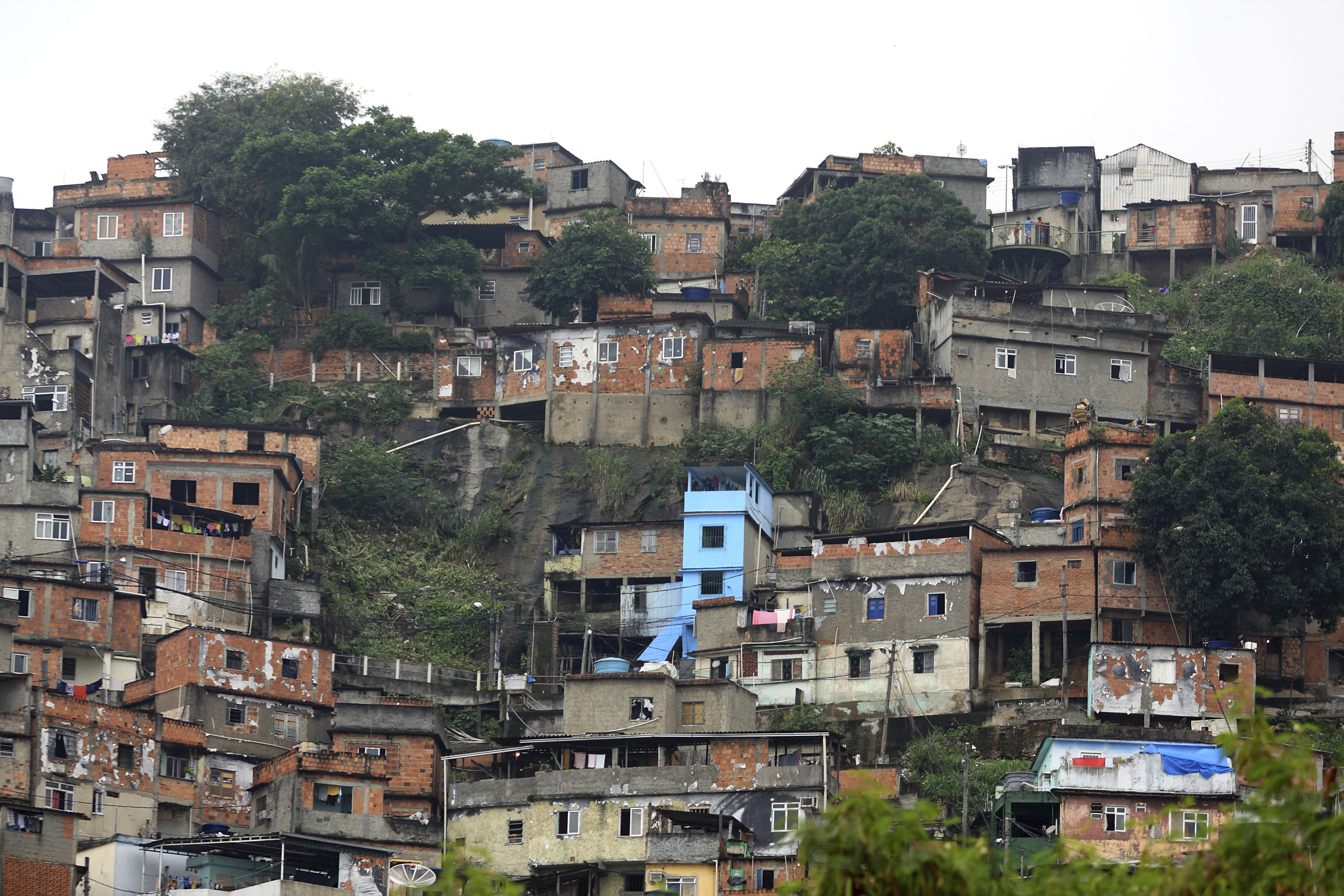
Governments, individuals, and charitable and social action organizations work to eliminate poverty. They try to improve educational and job opportunities for those in need and provide many low-income people with financial aid.
Complex economic and social factors sometimes lead to business slumps, such as the worldwide economic downturn that began in late 2007. During a slump, many workers in cities lose their jobs, and the number of people who need help increases. The workers can sometimes collect unemployment pay from the government, but this pay is much less than their usual income. Unemployed workers cut down on their buying, and business suffers further. Immigrants are often harder hit than others during an economic downturn. They may lose their jobs before other residents do and may be less eligible for some kinds of assistance. Young people who have just graduated from college also have a hard time finding work during difficult economic times.
Governmental problems.
Through the years, the job of governing cities has become increasingly complex. Today, city governments must find ways to rebuild aging, decaying areas and to provide satisfactory schools, police protection, and other necessary services. Population growth contributes to the difficulty of governing cities. Urban governments also lack the funds that would help solve their problems.
Governments throughout metropolitan areas seek to provide services for populations that are continually increasing. In earlier years, the challenge was largely a case of eliminating inequality between central cities and suburbs. Many people who move into cities are poor, and many who move out are wealthy. This development means that city governments must provide financial assistance for a larger part of the population. The problem is especially serious in the case of schools, which in many cities in the United States, for example, are financed by taxing local residents. Provincial, state, and federal governments contribute to the cost of operating cities and often target the most needy with welfare, public health, public housing, and special education programs. Even so, cities face serious financial problems.
Suburban governments, rapidly growing towns, and neighborhoods in big cities also face challenging problems. They must find the money to pay for new schools and for fire and police protection. They must also install new sewerage and water systems.
A city government is part of a complex authority system. Each city government is subject to the regulations of its central government. In some countries, cities are also subject to the regulations of regional governments, such as those of states and provinces.
In the United States, state legislatures set up city governments to provide local services. Most states grant cities home rule. That is, a city may—within the general laws of the state—adopt its own charter (form of government) and have considerable freedom in local matters. In a state without home rule, the state legislature decides what form of government a city will have. It also decides many city government policies, such as the kind of and rate of taxation. Other countries also grant home rule—sometimes known as devolution or decentralization—to cities. Such countries include Australia, Brazil, Canada, China, India, Indonesia, Pakistan, South Africa, and Uganda.
Many separate governmental units operate within most metropolitan areas in the United States, Australia, Canada, and other countries. These units include city, suburban, county, and township governments; school districts; and special districts. Special districts include units that provide for garbage collection, mosquito control, sewage disposal, and park management. No one governmental unit has authority over the entire area. Therefore, no one unit has the authority or the responsibility for dealing with such areawide problems as pollution and the flow of mass transportation. Metropolitan governments have been established in a few metropolitan areas to provide an overall authority. A metropolitan government may be responsible for many services throughout the entire metropolitan area, including police protection, water supply, and mass transportation.
The Miami and Nashville areas have metropolitan governments. Many people oppose this form of government. They fear that it results in higher taxes and believe only small local governments can remain close to the people. One solution that some city governments are trying is to pursue more voluntary agreements with other local and regional governments. Joint purchasing in larger bulk of necessities becomes more economical for all. Sports facilities and schools may also be shared, as may bus, emergency, and health services. New ideas for solving such coordination problems have been promoted by civic groups and associations of professionals, such as city managers or parks administrators.
Solving city problems.
Cities have made some effort to solve their problems, but much remains to be done. More money than is now available could partially solve some of the problems. In some countries, the funds would come from taxes paid by citizens and businesses. Some people favor extensive use of tax money for social improvement, but others oppose it.
Government regulation can also be used to help solve problems. For example, governments can demand that car manufacturers make cars that pollute the air less than today’s vehicles do or try other measures. The government of Bogotá, Colombia, for example, prohibits cars with even-numbered license plates from being driven in certain areas of the city on certain days during rush hours to cut the number of cars on the street. Similarly, drivers in London, England; Stockholm, Sweden; and Oslo, Norway, pay tolls to enter certain parts of the city. Again, some people favor extensive government regulation as a solution, but others oppose it.
Cultural variety in cities
Metropolitan cities are filled with people from many different cultures, and this variety makes them interesting places to live. People who arrive from other countries often settle in cities. They bring many ideas about religion, food, language, and government to their new homes. For this reason, cultural contrasts are often more dramatic in cities than in smaller towns.
Many people choose to live in cities because they enjoy the variety of cultures found there. But cultural differences can add to urban conflict. Discrimination often occurs between cultural groups. In addition, older groups sometimes dislike newcomers because they do not welcome a challenge to their own culture.
Neighborhoods.
Immigrants tend to settle near others with similar cultural backgrounds. Neighborhoods often develop with stores, restaurants, and houses of worship for people from certain cultures. In these neighborhoods, people may speak, read, and hear the language of their original country. They may buy books in Polish or rent films from India, for example. Many cities have an area called “Chinatown,” where visitors can sample Chinese foods and buy imported products. 
Immigration patterns often shape the neighborhoods and cultures found within a city. In the 1800’s, for example, many neighborhoods in the United States attracted immigrants from Ireland or Eastern Europe. Today, many immigrants come from Latin America and Asia, especially China, India, Korea, the Philippines, and Vietnam. The Asians bring Buddhism and other non-Western religions to the United States. Latin Americans bring a tradition of large, close-knit families.
Some neighborhoods that initially serve as home to specific immigrant groups later come to be associated with a particular lifestyle. Greenwich Village in New York City, home to French, Irish, and Italian immigrants in the late 1800’s, became a classic bohemian neighborhood in the early 1900’s. This area attracted artists and writers with its low rents and tolerance of unconventional lifestyles. Young people moving to big cities to start entry-level jobs today are often attracted to such neighborhoods as well, as are retired urban professionals returning from suburbs and small towns. These new city dwellers often bring with them concerns different from those of earlier inhabitants, such as sustainability of the environment and the importance of living a healthy lifestyle. City leaders may thus find their focus changing from providing low-income housing and education to building bike paths and exploring alternative energy sources.
Political culture.
One important way in which the cultural groups within a city may differ from one another is in their views on government. Social scientists use the term political culture to describe such views. For example, most people in some cultural groups believe strongly that citizens should actively participate in government. Other groups may have little experience with citizen participation in government. Different cultural groups also tend to have different views on how a city’s government should be organized, which services it should provide, and which problems it should try to solve first.
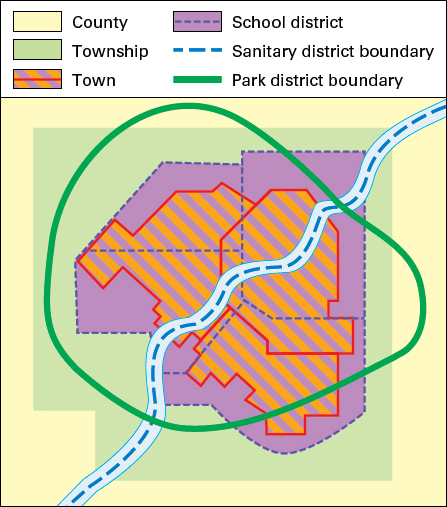
The existence of a variety of political cultures within a city can lead to friction. However, many people point out that a city can be strengthened by the existence of a wide range of viewpoints among its residents. For example, a city’s immigrants may have lived under various types of governments and observed many different solutions to urban problems. As a result, they may bring to their adopted city new ideas and experiences that can help solve the city’s problems.
In the early 2000’s, social media changed the way ordinary citizens, particularly young people, participate in political movements that affect their city and their nation. In cities as diverse as Cairo, Egypt; Kyiv, Ukraine; and Hong Kong, China, social media enabled people to organize and share information quickly about political gatherings and public protests.
Future cities
Demographers (people who study human populations) have made various predictions about urban communities of the future. They believe that metropolitan areas will continue to grow in both population and area. In 1990, about 2 1/4 billion people in different parts of the world lived in urban places. By 2010, the number had risen to over 4 1/2 billion people. In the United States in 1990, about 190 million people lived in urban places as defined by the U.S. government. By 2020, the number had reached about 275 million.
Some new urban communities were built in the 1900’s, and more will be built in the future. Like today’s suburbs, the new communities will provide living space and ease the overcrowding problem caused by the population explosion. City planners hope that—unlike most suburbs—the new communities will also provide jobs for most of their residents. If the communities do so, the overcrowding of cities will be eased even more.
Communities that have such a self-supporting feature are usually built from scratch. They are called new towns or new cities. The United Kingdom and the Scandinavian countries were leaders in the development of new towns in the mid-1900’s. The governments of these nations provided much financial aid for this development. Similarly, the Brazilian government built a new capital city, Brasília, in the mid-1900’s. The government located this city in the thinly populated interior of the country, hoping that the modern city would attract further development to the area.
In the United States, where private enterprise plays the major role, only a few new towns were developed in the mid-1900’s. They include Columbia, Maryland, and Reston, Virginia. In the 2000’s, more new cities are being built in such places as China and India than in highly developed nations. In fact, the largest cities of the world today are mostly in less-to moderately economically developed countries, from China to Brazil.
The development of new towns and cities is a slow, costly process. Private developers are reluctant to take on such projects because of the uncertainty of—and the long wait for—profits. Many governments have been unable or unwilling to finance such projects. More and more of the land around central cities may be filled by people. The suburbs often spread out so far that some metropolitan areas will run together with no rural areas between them. Such a continuous stretch of metropolitan areas is called a megalopolis. For example, a megalopolis has formed between Boston, New York City, Philadelphia, Baltimore, and Washington, D.C. Opponents attack such development as suburban sprawl.
Sociologists foresee physical changes in metropolitan areas. Sociologists are people who study the individuals, groups, and institutions that make up human society. To absorb the increasing population, governments may permit taller buildings in areas where they are now prohibited. Many cities in India, for example, have very low height restrictions on buildings and rapidly increasing populations. These factors have led to sprawling cities and high housing prices. Shanghai, China, on the other hand, which also is experiencing a population boom, has dramatic high-rise towers.
Governments may also set aside much more land for parks and other recreational areas. They may try to solve traffic problems and improve safety by expanding public transportation and by creating separate roadways for automobiles, trucks, mass transportation, and pedestrians. City life develops from many changes, big and small, that flow from numerous complex processes. Cities are a valuable place to begin to see all of the complexity in the world.
